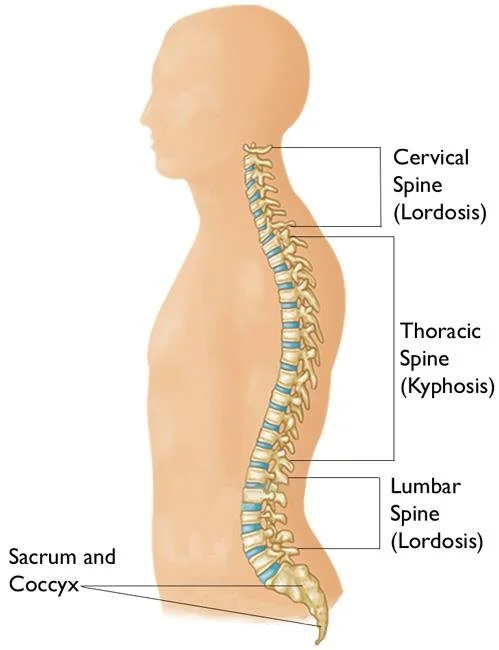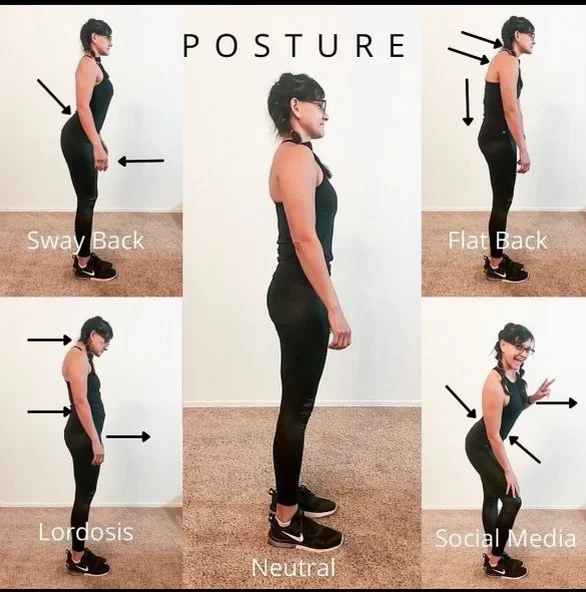It’s Posture, Baby!
HELLO THERE!
Welcome to The Body Benefits' first newsletter! We're so excited you're here. We hope to provide you with knowledge on how to set a good foundation for yourself to move through your workouts, through Costco runs, and even sitting in the car/in meetings that you wish would end, and any other thing you may do.
We'll be talking a lot about "the core" (newsflash: it's more than "the 8 pack") and how it connects literally the whole body-hence the name. We also know that if you clicked to open the newsletter, you may, like us, just want to skip to the part you're here to read. We really hate it when we go to look up a recipe and then have to read a story about someone's random family memory from when they were 8. But we also hope that you'll read to the end because we want you to know a little about us, and we want to know ways we can help YOU!
Posture
Posture Mindfulness
“Our posture can take a beating day in and day out with repetitive movements and static postures during the day. (ummmm, hello to texting with our shoulders slump down a bit and bring our head into a ‘forward head posture.’)”
"Be like a pineapple: stand tall, wear a crown, and be sweet." (Lauren would like to add to also be bold and maybe a little tart at times, but ya know...we digress)
How many times in your life have you heard or said "Stand up straight!" Whether it was a parent, a coach, a teacher, or yourself doing the reminding, our posture can take a beating day in and day out with repetitive movements and static postures during the day. (ummmm, hello to texting with our shoulders slump down a bit and bring our head into a "forward head posture.") OR how many times have we seen (or been) a person contorting our bodies to get that booty pop for the 'gram? (um, hi! It's us)
The human body uses SO MANY muscles for posture: the glutes, the whole core (so basically from your glutes to your shoulders) which entails: obliques, front abdominals, back muscles, shoulders, lats, your spine...the whole thing! If you feel overwhelmed about it, it's ok. We get it.
The Spine
Our spines are in three categories: cervical (neck area), thoracic (upper/mid back area), lumbar (low back).
You can see that the spine has some natural curve to it. We don’t want anyone to think their spine has to be a PVC pipe (though we may bust out the PVC pipe in class so you can see how our spines move in comparison and how to pull back into neutral spine), nor do we expect for people to be in “neutral spine” 100% of the time. When we say “neutral spine” we essentially mean minimizing or taking out the over exaggerated curves of the spine: the hunching, the forward head or “text neck”, the booty popping. The is the moment when your muscles come into play!
The Muscles
“Booty, booty, booty, booty, rockin' everywhere”-Bubba Sparxxx
Yep. The booty is that important to your posture that we quoted Bubba Sparxxx. Your glutes are important for posture because they act as extending muscles or “extensors” because they extend or pull your spine towards the ground, thus basically pulling you into an upright posture. So how do we help activate the glutes? Well one of our favorite ways is by glute bridges! There are millions of ways to do them but we love a yoga block underneath the sacrum or between the knees.
Your glutes are also the base of your core. (Ms. Trainor is correct, it really is all about that bass.) As we engage the glutes to achieve better posture we can just leave the core all loosey goosey. (A word about a loosey goosey core: Yall, we are not wanting everyone be solid like an Olympic gymnast, but if you are a gymnast and your job requires that kind of core-props to YOU! But for the everyday guy or gal we just want you to know the difference between trying to suck in your core vs. engaging the muscles to support your spine.) One of the core’s main jobs-to support the spine which houses your central nervous system….soooo the core is pretty important.
Core Engagement
In the yoga and fitness world you hear the words "engaged/activate your core!" said in classes all of the time-but what does that MEAN?! I (Lauren) would mentally scream that until I finally understood. Core engagement is more focusing on pulling the muscles from the pelvic floor up gently while also pulling the muscles around your navel in and up towards the spine. This allows the body to contract the muscles around the spine to support it while in a static position or in explosive movement and everywhere in-between. So how do you know if you're doing it right? Think about how your body would react if a toddler was about to punch you in the stomach. It's not going to hurt at all, but your body's natural reflex would be to engage your core to protect your internal organs and spine. That natural reflex is your core engaging.
Open up your Heart
Modern day, western culture has most people sitting at a computer, on a phone, driving, or looking down in some form for A LOT of the day. While we need the glutes to help pull us up and the core to activate, we have one final piece to add to our "core tower-" the shoulders and the head. Remember in Jerry Maguire when the kid spouts off the fact about the human head weighing 8lbs? Well, about every inch your head moves forward and down adds about 10lbs of pressure onto the spine, shoulder, and upper back muscles. To help us 1. feel better because I don't know about y'all but I (Lauren) get KILLER headaches if my head has been too far forward for most of the day and 2. find better posture we need to work on a few things. Working the upper back muscles like the scapula muscles and the rhombus shaped one in the upper back aptly named, the rhomboids. Working to strengthen these muscles will help you pull your shoulders back when you need a break from a "sitting at the computer" position.
Another great way is to open the chest aka, your heart. If you have access to a yoga block or foam roller you can lay your upper back on the foam roller or block, bring your arms out to a T and then bend the elbows so your finger tips are reaching for the baseboard that is behind your head. Start to reach up towards your baseboard while keeping the fingers and elbows "floating." One of the best chest openers!
With all of that said about posture and the spine, do we really need to be in neutral spine ALL of the time? Well...as always we have more to say, so click below if you want more!



